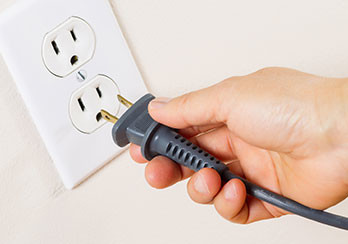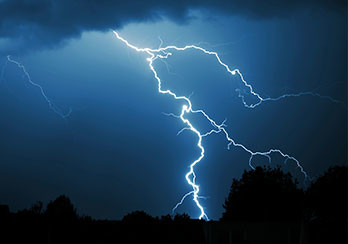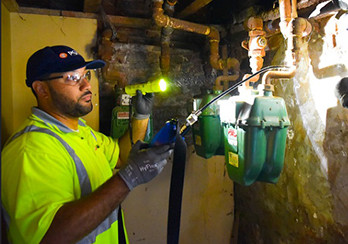Carbon Monoxide Safety
Know the Symptoms, Prevent the Hazards
Carbon monoxide poisoning is entirely preventable. Learn about the causes and what you can do to stay safe.
What is carbon monoxide?
Carbon monoxide (CO) is a colorless, odorless and tasteless gas that is highly poisonous when inhaled. Carbon monoxide is produced when carbon-based fuels like oil, coal, gas, propane or wood are burned without enough oxygen present.
What causes carbon monoxide poisoning?
Carbon monoxide may be released as the result of improper functioning or misuse of heaters, dryers, boilers, fireplaces, gas stoves, generators or any other gas or fuel-burning equipment. When too much CO is in the air, your body replaces the oxygen in your red blood cells with it, which can cause carbon monoxide poisoning.
What are the symptoms of carbon monoxide poisoning?
Exposure to carbon monoxide may cause unexplained symptoms, immediately or gradually. These symptoms can include:
| Mild Exposure: | Moderate Exposure: | Severe Exposure: |
|
|
|
If you or someone else experience these symptoms after being in an enclosed area, go out into fresh air immediately. Seek emergency medical attention if symptoms do not quickly improve.
Who is most at risk for carbon monoxide poisoning?
People that spend most of their time indoors, like elderly people, children and someone who is or has been ill, are at the highest risk for CO poisoning. Poisoning is most likely to occur in the winter.
If a monitor goes off or you suspect a carbon monoxide leak:
- Immediately evacuate everyone, including pets, outside and call 911.
- Seek immediate medical attention if anyone is experiencing symptoms of carbon monoxide poisoning.
- Call the PSE&G Emergency Service line at 1-800-880-7734 (PSEG) to have your appliances inspected.
- If the presence of carbon monoxide is confirmed, do not return until the problem is corrected and it is determined to be safe to do so.
How can I prevent carbon monoxide poisoning?
- Properly maintain heaters, boilers, fireplaces, stoves and other gas or fuel-powered equipment.
- Use carbon monoxide detectors. These inexpensive devices will sound a loud alarm in the case of dangerous levels of CO. We recommend the detectors be “UL” certified.
- The U.S. Consumer Product Safety Commission recommends placing a carbon monoxide alarm in every area of your home. If just one alarm is installed, it should be placed near the sleeping rooms of the house.
- Be sure to check the batteries of your carbon monoxide detector at least every six months.
- Never use a gas oven or range to heat a room. This can deplete oxygen from the air and cause suffocation or severe carbon monoxide poisoning.
- Ensure that any natural-gas-burning appliances are installed, maintained and used safely and according to manufacturer instructions. Gas appliances should be checked by a qualified technician periodically to ensure that they are working properly.
- Do not allow vehicles, lawnmowers, snow blowers or any gasoline-powered engine to idle in a garage attached to a house. Carbon monoxide can drift into the living space and create a hazardous situation.
- Check that all appliance vents are clear of any debris. Vents or exhaust ducts should never be shut or blocked. Snow accumulation, falling snow or ice, bird and squirrel nests or leaves can potentially block proper ventilation and cause a build-up of CO.
Carbon Monoxide Alarms
PSE&G does not sell or install carbon monoxide alarms. The Consumer Products Safety Commission, the New Jersey Division of Consumer Affairs and Underwriters Laboratories (UL) can help you make an informed decision. Look for UL or nationally recognized testing laboratory certification on any alarm you purchase, and carefully follow the instructions for placement, use and maintenance.
Click here to download our free carbon monoxide safety poster.
Free Carbon Monoxide Safety Presentations
Interested in a free carbon monoxide safety presentation for your organization? A PSE&G representative may be able to deliver an interactive presentation for your group. Contact us at public.awareness@pseg.com for more information.

























